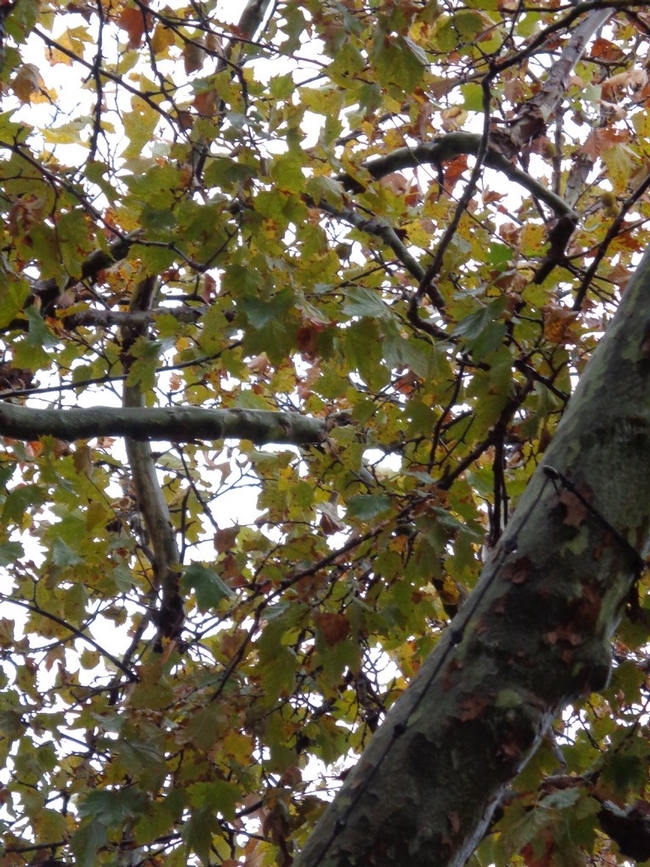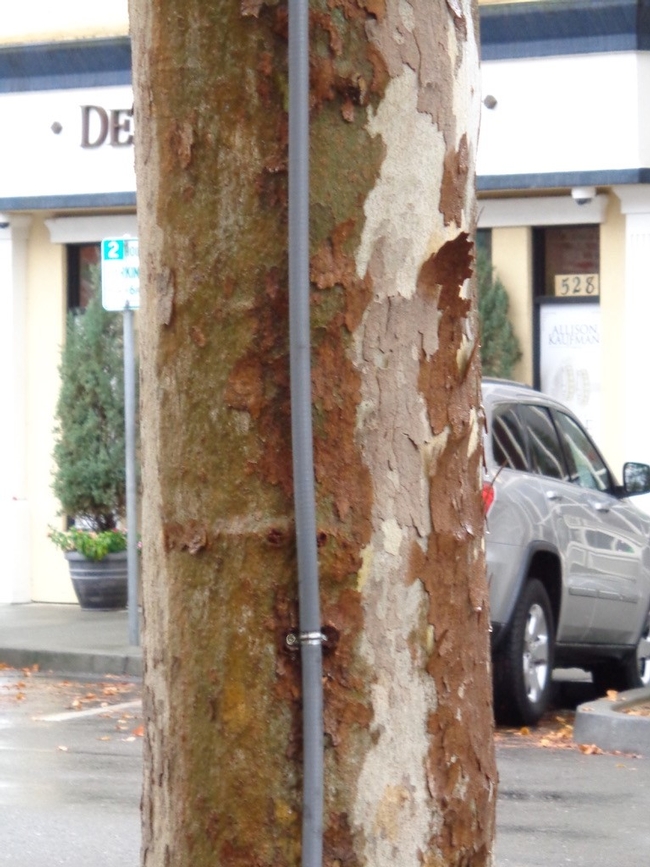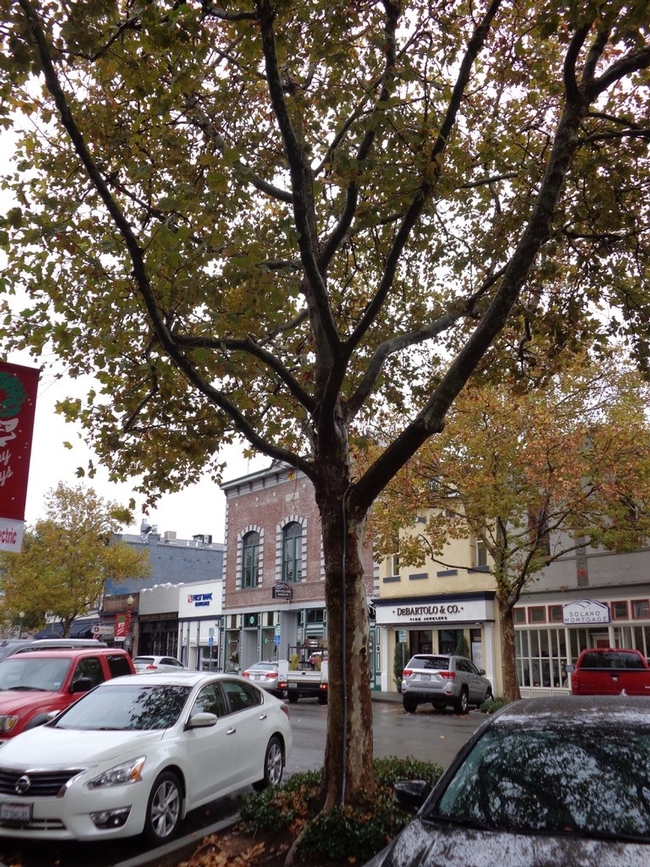Sycamores
A few days ago I was looking online for a place to go hiking with our dogs not far away and found a park in Livermore. Sycamore Grove Park wraps most of the way around the Livermore VA Hospital. The park represents what the alluvial planes of the East Bay looked like in the 1800s and early 1900s when they were covered with sycamore woodlands intertwined with gravel and silt stream beds that flooded in winter and dried up in the summer. Today the stream that flows through the trees in the park is dam-controlled, so the stream bed and trees now have water year-round.
Eleven species of sycamore exist, but one is native to California and Baja California: Platanus racemosa also known as the Western Sycamore. Looking at the official name gives a clue to the common name of the species – plane tree. Western Sycamores have beautiful peeling bark and large leaves up to 10 inches wide. The trees are fast-growers, reaching 30 feet in five years with regular water and well-over 100 feet (over a longer period) in their native habitat.
They do need water. Their roots grow down towards the groundwater table in areas without summer irrigation. They can live hundreds of years this way. With regular irrigation, the roots will likely not reach the water table. So, when a drought causes there to be less water for the trees, they can die. Trees without that regular irrigation can live up to 500 years with “offspring” shooting up around the original trunk. The root system can live much longer (thousands of years) to keep the shoots alive while the original tree dies.
Sycamore trees are important to the ecosystem. The caterpillar of the Western tiger swallowtail butterfly(Papilio rutulus) relies on the sycamore for a home and for nutrition as it matures. The bark is food for some squirrels and beavers. Finches use the seeds for food. Bats, owls, gray foxes and birds inhabit the trees. We enjoy their shade on a hot day.
Sycamores, however, can be a problem for those with allergies. Their seed pods have tiny hair-like structures that go airborne with the seeds. Sycamores are pollinated both by bees and by the wind. The leaves themselves also have tiny sharp hairs that can cause a rash and itching.
The leaves of the trees in our area often have anthracnose, a fungal disease, that usually hits the tree when the leaves first start to unfurl in the spring. The leaves end up deformed and spotted and drop early. The tree can also develop cankers. Anthracnose won't generally kill the tree, but the leaves need to be dumped in the trash, not in the compost.
So, the next time you are strolling down sycamore-lined Main Street in Vacaville, enjoying the shade and the architecture of the trees, imagine when the entire area was covered with winding seasonal streams lined with beautiful Western Sycamores.
For more information about anthracnose: http://ipm.ucanr.edu/PMG/PESTNOTES/pn7420.html

photos by Michelle Davis

sycamore pole

sycamore 3

